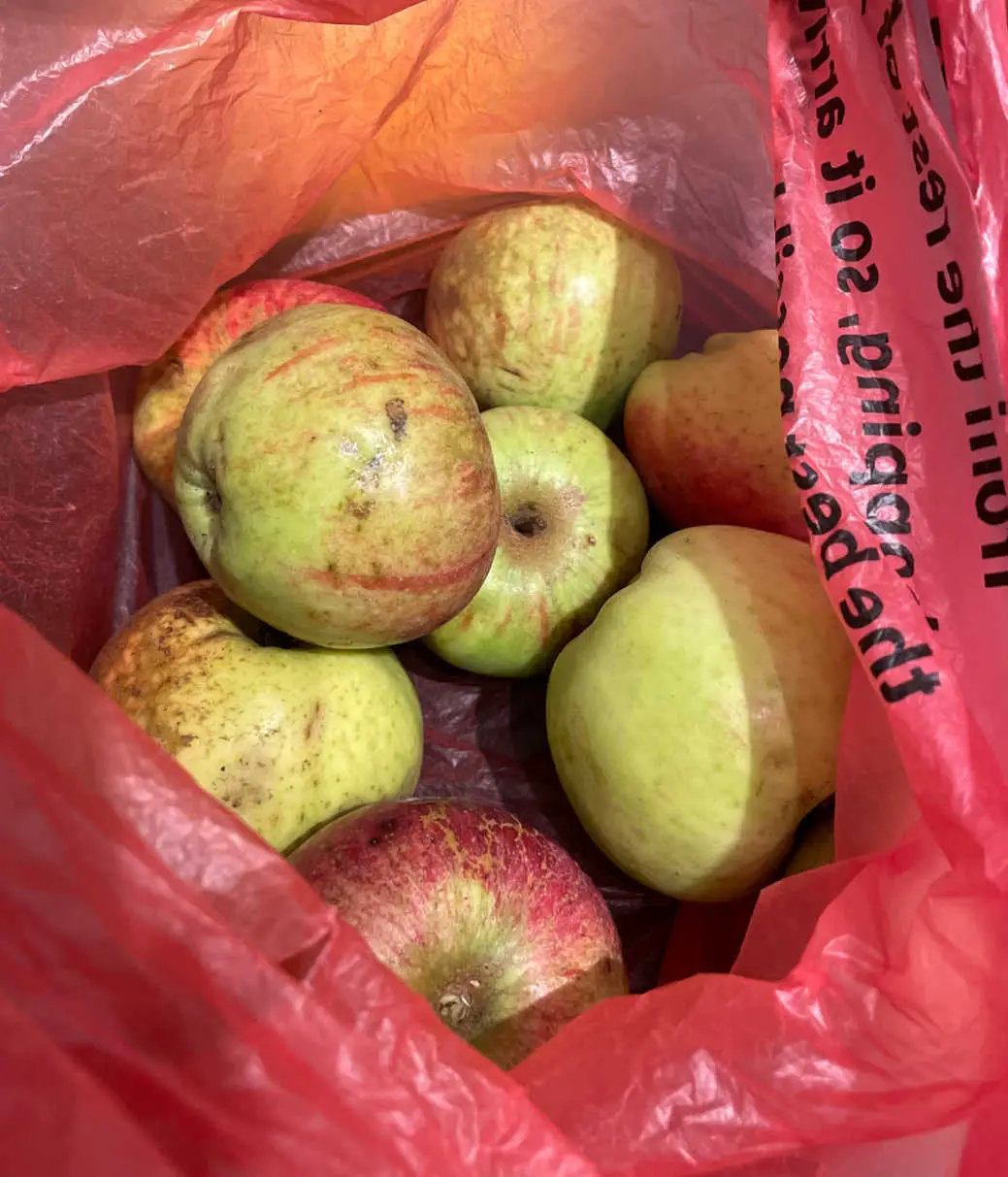15 Easy Winter Forest School Activities
Is it getting colder where you? During the colder weather, we tend to choose different forest school activities – ones that are suitable for the conditions and small chilly hands!
Jon has run forest school activities outdoors for many years now, so we have a good sense of what works and what doesn’t when it comes to keeping kids moving and engaged.
Generally, as long as they are wrapped up warm (and you are too) any of your favourite activities can be done during the winter months, perhaps with a little bit of modification.
Check out our guide to what to wear for forest school in all seasons so you can get dressed appropriately!
Below you’ll find tried-and-tested, winter-friendly forest school activities that we use frequently with children in our groups. You can easily tailor them for different age groups. We tend to work with pre-school and primary kids, so you’ll find they work well for those age groups.
You can set up these activities and invite children to take part. They might not engage straightaway but if you start doing the activity yourself, like making a bird feeder, they might come over to see what you are doing and join in.
1. Winter cooking
We have a whole article on winter campfire food, so check out our favourite recipes in that article!
Read next: Forest school recipes for winter
The campfire is a great way to bring warmth and light to your forest school area on a wintery day. And hot food and drinks keep bellies warm! Hot chocolate and marshmallows, anyone?
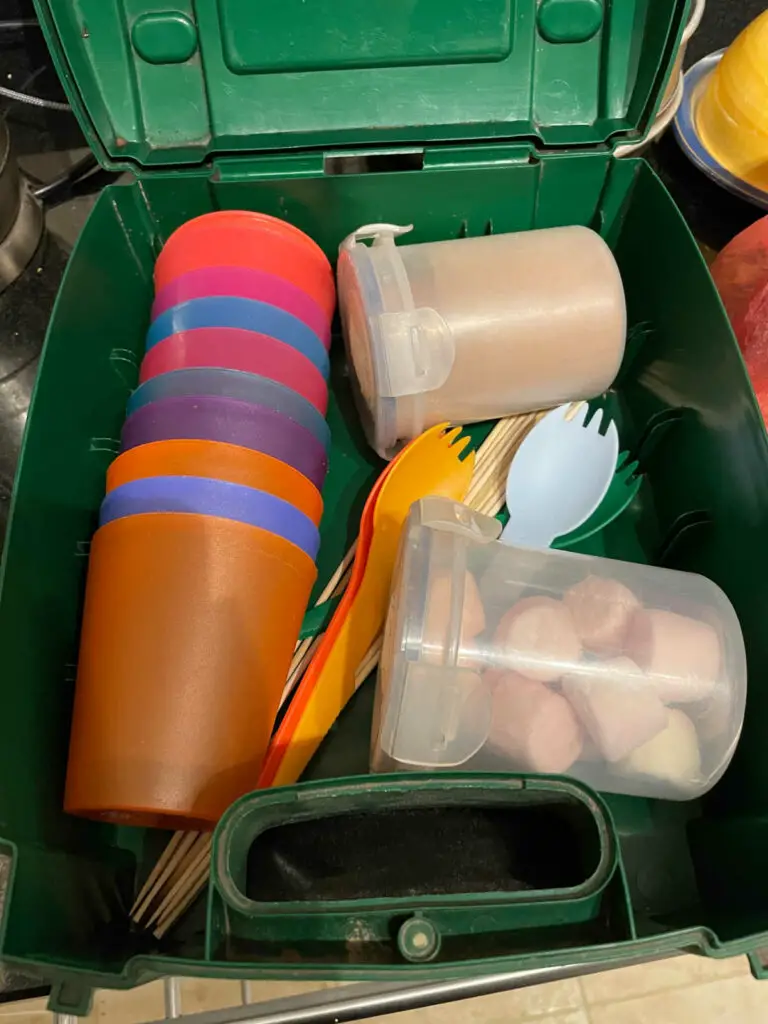
2. Snow sculptures
Cold weather can mean snow! We don’t often have enough snow to make sculptures, but it’s fun when there is enough snow.
You don’t need any special equipment, but if you have trowels or rakes, they can be used to make shapes in the snow. Or use the kit you have for beach school – sandcastle buckets!
3. Listening walk
A listening walk is something you might want to do with a class in a more educational-based outdoor winter activity rather than ‘pure’ forest school, but see what you think would work well with your group.
Go out, walk as quietly as you can (hard for kids, I know!). Focus on the sounds associated with winter, such as the crunching of snow, the whisper of the wind through bare branches, or the calls of winter birds.
4. Nature scavenger hunt
We have a winter scavenger hunt printable that you can use as a starting point for a walking trail.
We’ve found that scavenger hunts work best on dry days, especially if children are picking up things from the forest floor.
I know that printables aren’t something forest school leaders regularly take out, as they go against the child-led approach, but with younger age groups, or if you are a parent looking to get your kids outside on a cold day, they can provide a purpose to a walk.
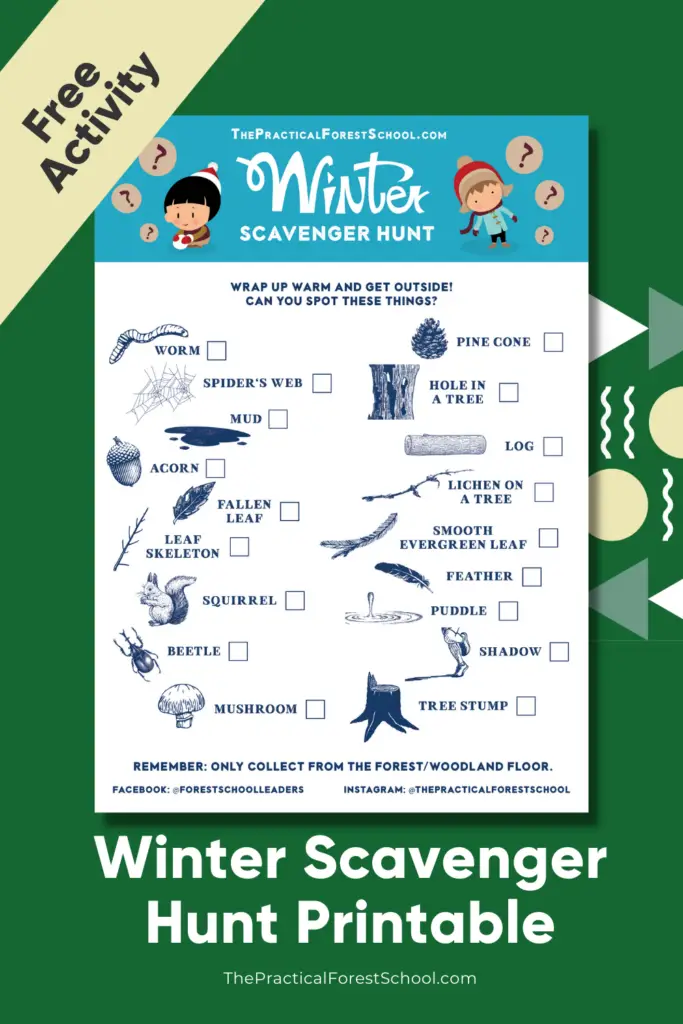
5. Make bird feeders
Our children love making bird feeders. A simple option that works well is sticking sunflower seeds into an apple (use windfalls if you have any left from the autumn).
We found that preschoolers struggled to push the sunflower seeds into the apple, so Jon had to make holes for the seeds. Then the kids slotted the seeds in.
Make-it-yourself fat balls are another option but be prepared to get messy with those!
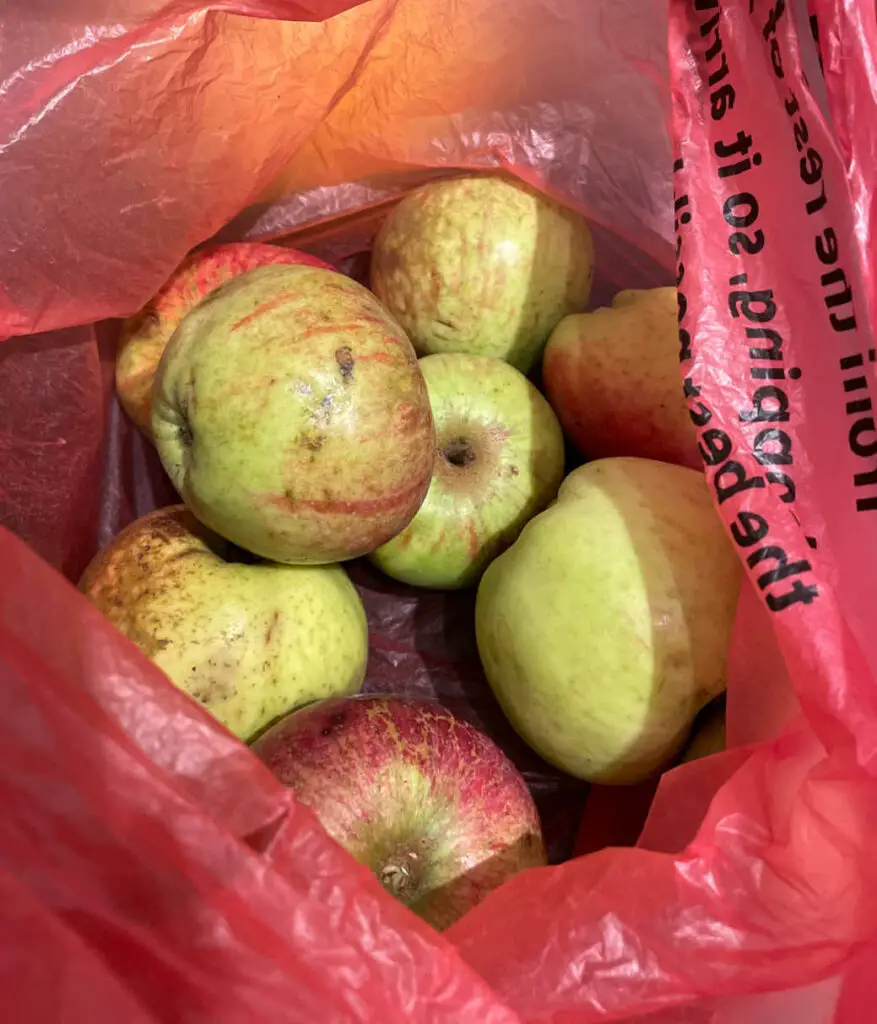
6. Smashing ice
Our own children loved breaking up ice cubes to get at what is inside. A fun outdoor activity is to try to find frozen puddles and stamp on them (carefully – no slipping!). Look at the patterns that the cracks make.
Another option that takes a bit of prep is to pre-freeze nature items (or even small plastic toys if you have to) and let the children excavate them.
Be warned: this activity does not take very long! Children are extremely good at smashing blocks of ice to get at what is inside!
7. Ice art
Leave containers of water out overnight and use the resulting ice blocks as the canvas for art. Sometimes we find leaves and other natural materials find their way in the buckets and give us a head start.
Children can use the ice as a starting point, decorating it as they see fit. They can even make their own containers full of water and natural objects, leaving them out overnight to see what they look like when frozen. What happened to all the items? Did they sink or are they evenly spread out throughout the ice block? What floated on the top?
Use shallow plastic plates filled with water and leaves, winter berries and grasses and make frozen suncatchers.
We don’t tend to do loads of water-based activities in winter as wet kids are most often unhappy kids – it is really important to have the right clothes for forest school but sometimes water goes into wellies and down the back of jackets, right?
8. Garlic tree trails
Winter always smells so fresh, and here’s a smelly idea to keep kids moving on a cold day!
Cut a head of garlic in half to give you a bigger area to rub on a tree, and then mark a few trees with garlic, perhaps in a trail that leads to somewhere, or random is OK too.
The children then have to run around and smell the trees, trying to identify which ones are the garlic trees.
You might have to let them smell the garlic bulb first so they know what they are looking out for! We’ve done this with garlic but I expect you could also do it with other strong-smelling items, maybe coffee grounds?
9. Winter shelters
Build a den – this is something you can do at any time of the year, but it’s good in winter because there are often a lot of fallen sticks… and we’re not making a person-sized den here.
Invite the children to make a den for their favourite woodland animal. For example, they could den build for a hedgehog, a rabbit, a frog, a newt, a fox or any other creature – even insects (the easiest kind of den, if you ask me!).
They gather sticks, they build a construction of their choice. We often see kids get really creative, for example using leaves and making decorations. Perhaps you’ll even get a camp going!
Of course, building a person-sized shelter works as well. If your setting has the space and the materials, get the kids working together to create a den to sit inside. How many people can squeeze in?
10. Animal footprint trail (or Santa trail!)
Use the instructions and printable in our detailed article on how to make animal track trails.
Set up a trail for the kids to follow based on the tracks of any animal you might find in your setting at this time of year.
Our preschoolers love it when we do it with boot prints and the trail leads to something that Santa might have dropped during his Christmas preparations!
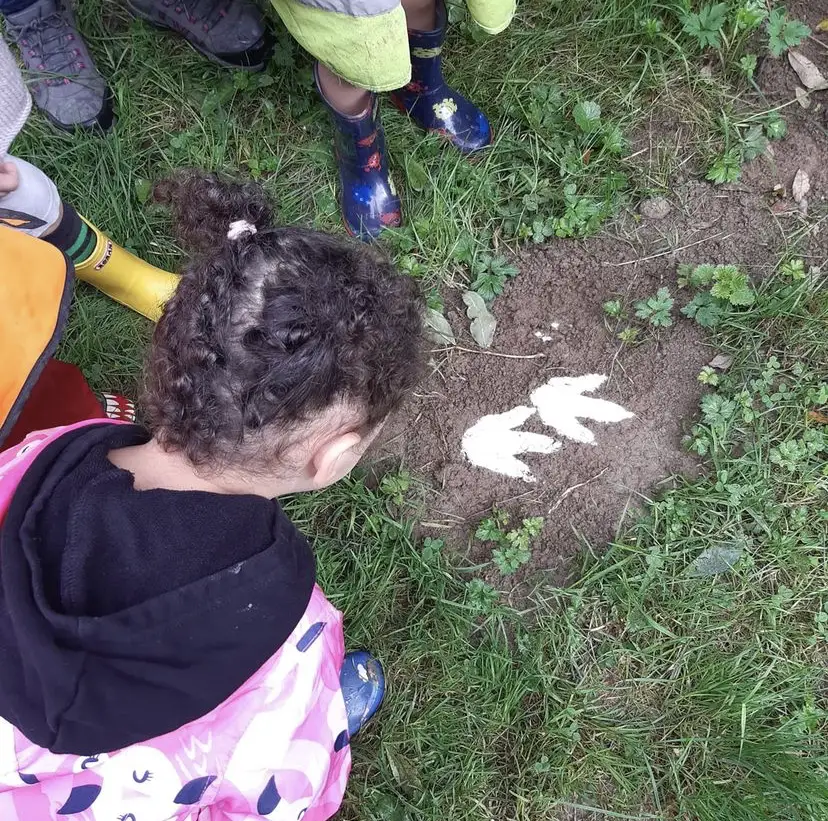
11. Shovel snow or leaves
Keep kids moving by inviting them to move snow or leaves (or piles of twigs or whatever) from one place to another.
Provide the tools or buckets to allow kids to move the snow. The bonus is that they will be clearing pathways for you at the same time!
You can even provide sand for them to sprinkle on icy areas.
12. Walk in the dark
It gets dark about 3.30pm here on the shortest days, so by the time after-school club comes round, we’re playing out in the light of the fire (Jon also has big rechargeable floodlights).
Go for a walk in the dark. Lots of children don’t get a chance to be outdoors in the dark, so you can provide a safe space for them to look at the stars and experience what it’s like to be out at “night”.
13. Make a maze
Why not make a snow maze if you’re coming into your setting and the snow is fresh?
If you don’t have snow, mud or leaves can work too! Mud play can be tricky at thist time of year as the ground is so hard if it’s cold and dry. Maybe make a small version – a maze for mini beasts.
14: Mini beast hunt
It’s cold, so many animals are already hibernating. But what you can find by digging around in the leaf litter? You will still find mini beasts going about their lives. Just be sure to cover them up again afterwards!
15. Tree trail
Look for different trees in your setting and compare what they look like. Children can pick a special tree to investigate further – provide the materials for bark rubbing, for example.
Evergreen trees and deciduous trees are going to look very different at this time of year. Use our tree identification printable or make one of your own.
For educators: Winter topic links
I know many people who read this blog are teachers running winter outdoor learning sessions in school based on the curriculum. If you want to be inspired by forest school activity ideas, you are in the right place! It’s easy to link these wintery outdoor sessions to topic-based learning. Here are some ideas:
English: Ask children to find items and then create a story using those items. Write a script for a weather forecast: will it snow every day?
Maths: Count and group pine cones or other items. Measure and estimate numbers. Mark out a grid on the ground and work on coordinates.
Art: The ice activity ideas above are a good starting point, or have the children look at works by Andy Goldsworthy and make their own inspired by his techniques.
Science and STEM: Make rain gauges and leave them outside to see how much water is collected. Set up water bottles with a tiny hole in the bottom to drip down and make your own icicles. Add food colouring to the water to see how that affects the ice creation. What happens when you add hot water?
Natural world: Talk about how animals survive winter and how humans have adapted how they live in cold climates to do the same.

About the author: Elizabeth Borley
Elizabeth is our forest school administrator, responsible for running the website and managing bookings for afterschool clubs. She is a member of the Forest Childcare Association and loves walking in the woods and places with a view. As a parent, she understands the value of children spending time outdoors.
